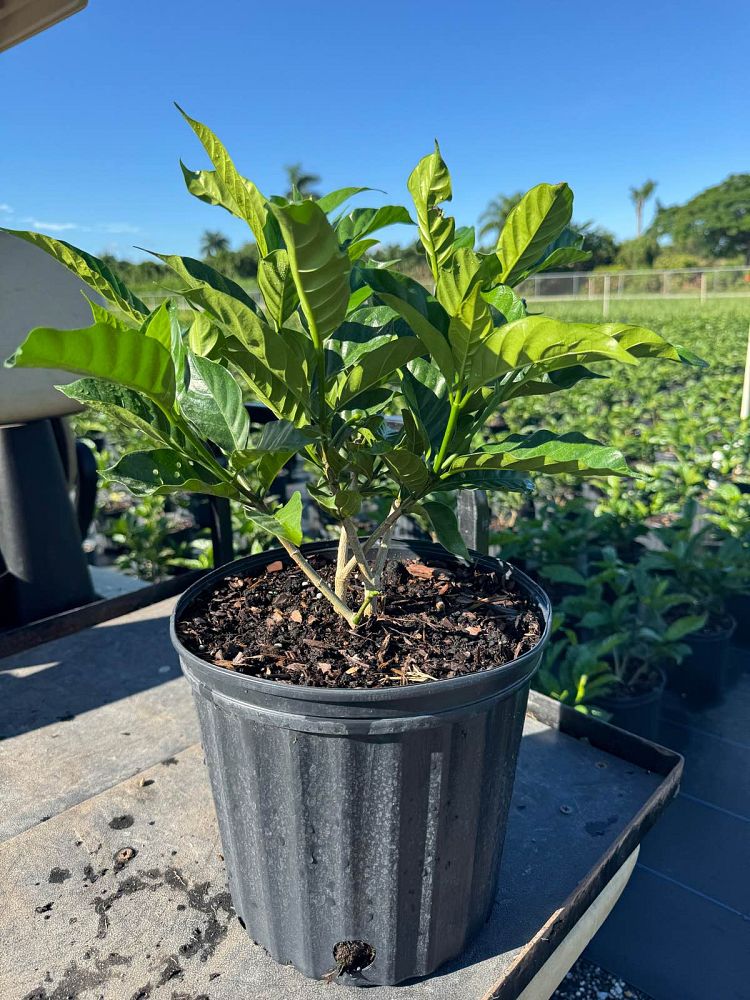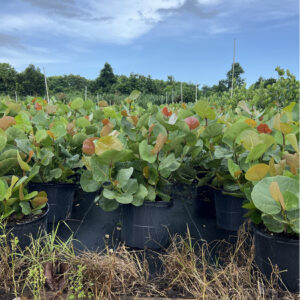Crape Jasmine, Florida Gardenia
Tabernaemontana divaricata (Crape Jasmine, Florida Gardenia)
Height: 3-6 feet; Width: 3-5 feet.
Flowers: Fragrant white, star-shaped blooms year-round.
Care: Prefers full sun, well-drained soil, and regular watering. Fertilize in spring.
Zone: Hardy in USDA Zones 9-11.
Landscaping: Great for hedges and borders; attracts butterflies.
Tabernaemontana coronaria
Height: 5-10 feet; Width: 4-6 feet.
Flowers: Fragrant white flowers resembling gardenias, blooming year-round.
Care: Likes full sun, well-drained soil, and regular watering. Fertilize in spring.
Zone: Hardy in USDA Zones 10-11.
Landscaping: Ideal for ornamental shrubs and privacy hedges; attracts pollinators.
Both species are valued for their beauty and fragrance in warmer gardens!
$22.63 – $63.38
Related products
Tabernaemontana divaricata (Crape Jasmine, Florida Gardenia)
Description
Height: Typically grows 3 to 6 feet tall.
Width: Can spread 3 to 5 feet wide.
Foliage: Features glossy, dark green leaves that are dense and attractive.
Flowers
Appearance: Produces beautiful, fragrant, white, star-shaped flowers.
Bloom Time: Flowers bloom throughout the year in warm climates, peaking in spring and summer.
Fragrance: The flowers are known for their sweet, gardenia-like scent.
Care
Sunlight: Prefers full sun to partial shade.
Soil: Thrives in well-drained, fertile soil.
Watering: Regular watering is necessary, but avoid overwatering.
Fertilization: Use a balanced fertilizer in spring to encourage healthy growth.
Hardiness Zone
USDA Zone: Generally hardy in Zones 9-11.
Landscaping
Use in Gardens: Great for hedges, borders, or as a specimen plant due to its fragrant flowers and attractive foliage.
Wildlife: Attracts butterflies and other pollinators.
Additional Info
Pests/Diseases: Relatively pest-resistant but watch for scale and aphids.
Maintenance: Prune to shape after flowering.
Fun Fact
Crape Jasmine is often used in traditional medicine in some cultures and is valued not only for its beauty but also for its aromatic properties.
Tabernaemontana coronaria
Description
Height: Typically grows 5 to 10 feet tall.
Width: Can spread about 4 to 6 feet wide.
Foliage: Features large, glossy leaves.
Flowers
Appearance: Produces white, fragrant flowers that resemble gardenias.
Bloom Time: Blooms year-round in suitable climates.
Fragrance: Known for a strong, sweet fragrance, especially in the evening.
Care
Sunlight: Prefers full sun but can tolerate partial shade.
Soil: Likes well-drained, fertile soil.
Watering: Requires regular watering, especially in dry conditions.
Fertilization: Fertilize in spring with a balanced fertilizer.
Hardiness Zone
USDA Zone: Hardy in Zones 10-11.
Landscaping
Use in Gardens: Commonly used as an ornamental shrub or for privacy hedges due to its dense growth and fragrant flowers.
Wildlife: Attracts pollinators like bees and butterflies.
Additional Info
Pests/Diseases: Generally pest-resistant but susceptible to root rot in overly wet conditions.
Maintenance: Minimal pruning is needed; shape as desired after flowering.
Fun Fact
The flowers of Tabernaemontana coronaria are often used in garlands and traditional floral arrangements due to their fragrance and beauty.
| Size | 3 Gallon, 7 Gallon |
|---|



